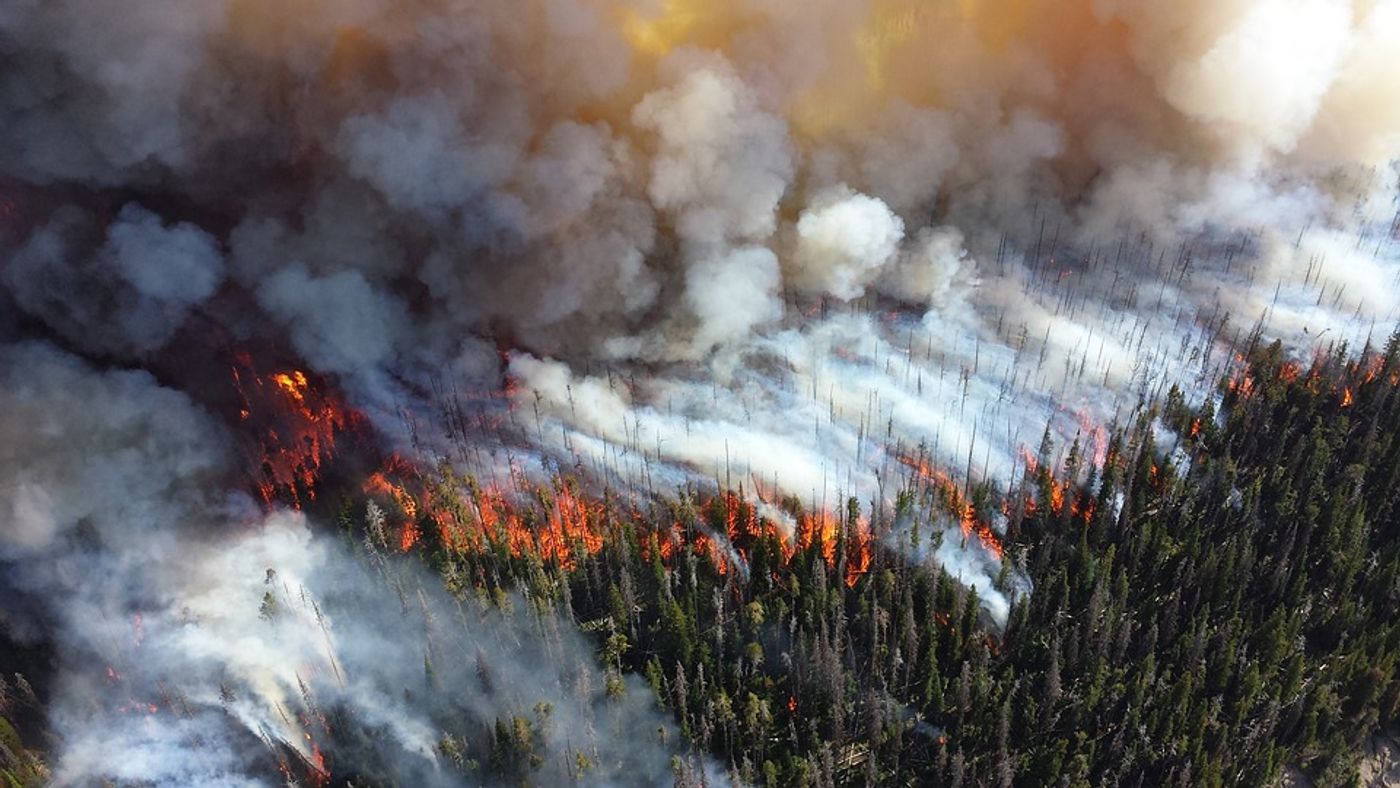Scientists rethink the warming effect of wildfire smoke particles
A study led by a team of researchers from Los Alamos National Laboratory targets Arizona's Woodbury Fire last summer as a case study to analyze the properties of smoke in megafires. Wildfire smoke has been thought to impact climate because of the sunlight-absorbing particles in its composition. This study suggests that this might not be the case.
In fact, report the authors, the chemical reactions that occur as the plume of the smoke mixes with clean air result in a loss of the smoke’s absorption power and ultimate climate-warming effect. Their findings were published in JGR: Atmospheres.
"These observations may be useful for those trying to represent organic light-absorbing aerosols, or brown carbon, in climate models by identifying how they age, as well as understanding processes affecting how strongly they absorb light and cause warming," said lead author James Lee.
In conducting their study, the team measured chemical, physical, and optical properties of ambient aerosol and trace gas concentrations in four large plumes in real-time utilizing an aerosol mass spectrometer at Los Alamos' Center for Aerosol Forensic Experiments (CAFÉ).
As co-author Allison Aiken, an atmospheric chemist at Los Alamos, explains, "Wildfire plumes are complex and change quickly. Particles at the plume's center have different shapes and chemistries than at its edge."
This chemical variety of aerosol properties within the plumes was unexpected and has implications for the climate and human health. As Lee mentions, brown carbon emissions, or the carbon released by the combustion of organic matter, absorbed light at the previously determined potency only in the core of the plume, not at the edges. And these patterns remained relatively the same as the plumes evolved and traveled. According to Science Daily, this implies that the warming effects of wildfire brown carbon are likely smaller than published model assessments.
"This is important as we need to capture the physicochemical changes that occur as plumes are transported long distances to model the climate impacts correctly and to understand the human health impacts at different locations and distances from the source," Aiken concluded.
Sources: JGR: Atmospheres, Science Daily









